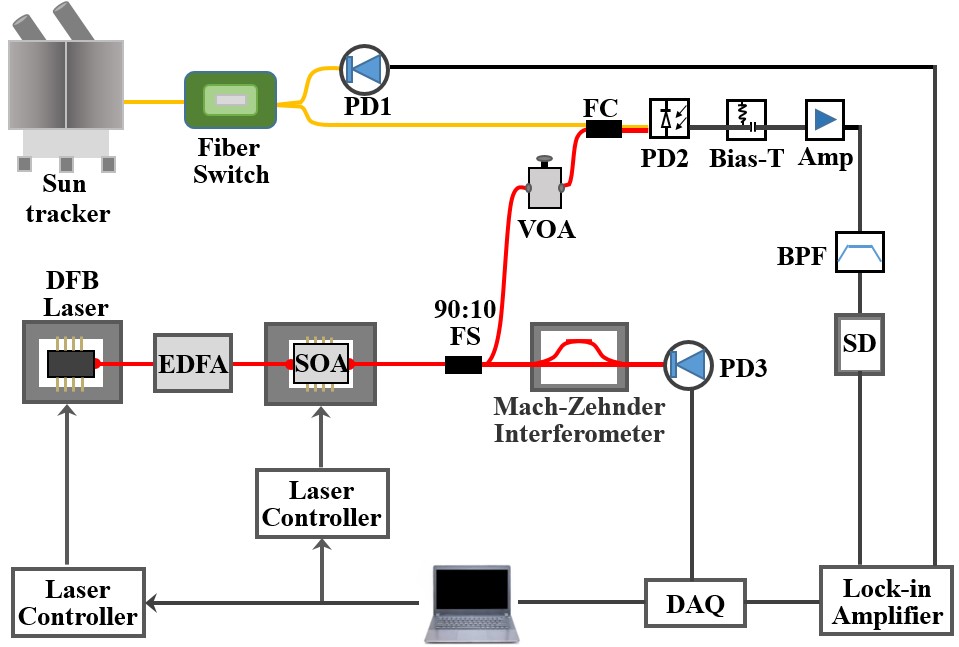
A research team led by Professor GAO Xiaoming from the Hefei Institutes of Physical Science of the Chinese Academy of Sciences, developed a new laser device, near-infrared laser heterodyne radiometer (LHR), that could greatly improve how we measure water vapor in the atmosphere. It successfully reduced unwanted noise during measurements, making it more accurate.
Their findings were published in Sensors and Actuators B: Chemical.
The LHR is small, portable, and has high spectral resolution, making it a great candidate for use on future satellites. However, it has faced challenges due to noise from the local oscillator, which limited its accuracy and usable spectral range.
To solve this problem, the researchers developed a new method using a semiconductor optical amplifier (SOA). This amplifier reduced the noise from the local oscillator, which improved the device’s accuracy and range. They used a tunable laser as the local oscillator, and by operating the SOA in dynamic gain saturation, they stabilized the laser power and significantly cut down on the noise.
“With this improvement, the LHR can better measure water vapor and its isotopes in the atmosphere,” said Dr. LI Jun, a member of the team, “and it provides valuable data for studying the Earth's water cycle and atmospheric transport.”
This research helps study water vapor and its isotopes, which is important for understanding climate change and the environment,according to the team.

Schematic diagram of the SOA-assisted RIN-suppressed LHR (Image by LI Jun)